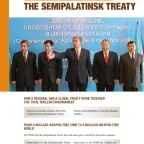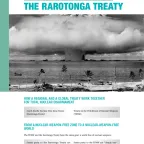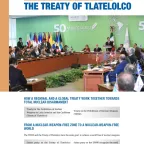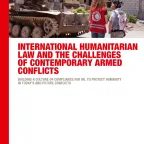The Semipalatinsk Treaty and the TPNW
… The Treaty on a Nuclear Weapon-Free Zone in Central Asia … Treaty) and the Treaty on the Prohibition of Nuclear Weapons (TPNW) share a common objective: …
… The Treaty on a Nuclear Weapon-Free Zone in Central Asia … Treaty) and the Treaty on the Prohibition of Nuclear Weapons (TPNW) share a common objective: …

… The South Pacific Nuclear Free Zone Treaty (Rarotonga Treaty) and the Treaty on the Prohibition of Nuclear Weapons (TPNW) share a common objective: …

… The African Nuclear-Weapon-Free Zone Treaty (Pelindaba … Treaty) and the Treaty on the Prohibition of Nuclear Weapons (TPNW) share a common objective: …

… Mine Ban Convention, the Biological Weapons Convention, the Chemical Weapons Convention and the Treaty on the Prohibition of Nuclear Weapons). Under the respective …

… acknowledged that the continued existence of nuclear weapons is one of the biggest threats for … community unequivocally agreed that nuclear weapons must be eliminated as soon as …

… The Treaty for the Prohibition of Nuclear Weapons in Latin America and the Caribbean (or … and the Treaty on the Prohibition of Nuclear Weapons (TPNW) share a common …

… Spoljaric at the Treaty on the Prohibition of Nuclear Weapons Signing Ceremony, 24 September 2024 … signature of the Treaty on the Prohibition of Nuclear Weapons, a landmark instrument of our …

… the 2024 Challenges Report The prohibition of nuclear weapons: Protecting humanity from unspeakable suffering Nuclear weapons and IHL; The Treaty on the …

… Day for the Total Elimination of Nuclear Weapons, New York. Excellencies, Ladies and … Day for the Total Elimination of Nuclear Weapons on behalf of the International …

… The 2024 Challenges Report focuses on: nuclear weapons – grey zones and hybrid warfare – …

Try one of the following resources:
Created in 1863, the ICRC library, alongside the ICRC archives, provides an indispensable documentary reference on the organization itself and international humanitarian law.
International humanitarian law is based on a number of treaties, in particular the Geneva Conventions of 1949 and their Additional Protocols, and a series of other instruments.
Customary international humanitarian law consists of rules that come from "a general practice accepted as law" and that exist independent of treaty law.